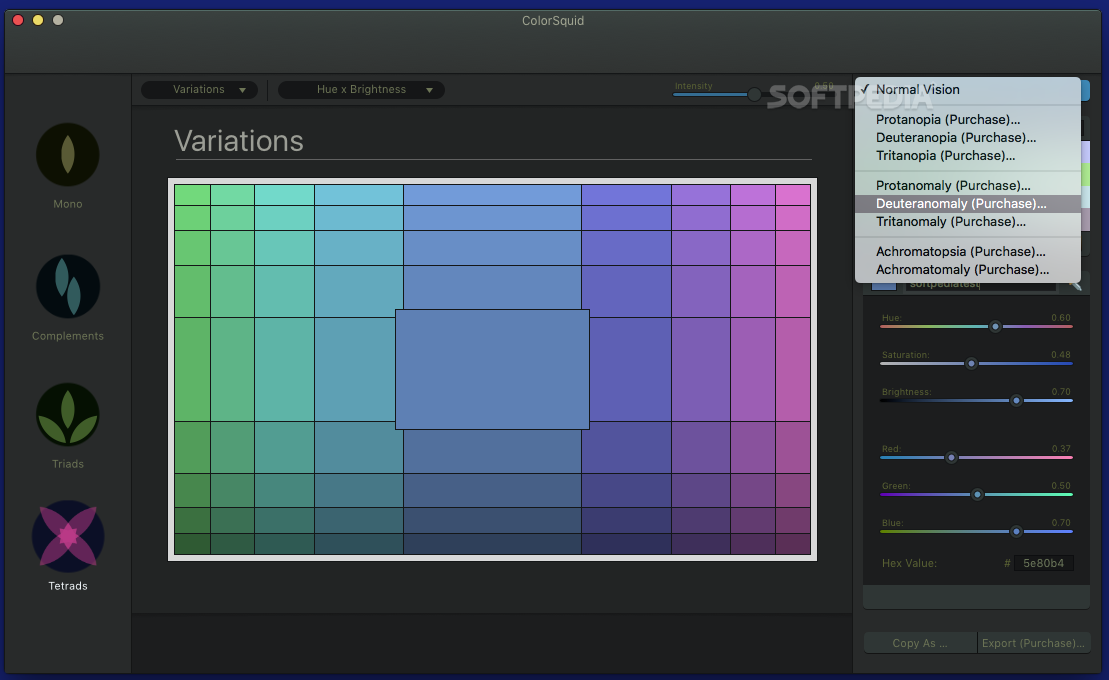
Early in the semester, one of our teaching assistants shared during a staff meeting that one of their students was struggling to make qualitative observations in the online laboratory assignments due to collecting color-based observations. We were excited to have the opportunity for students to perform simulated experiments that were inaccessible in the in-person lab due to safety or cost.

With the shift to online laboratories, we filled in gaps left by hands-on skill development laboratories in our curriculum with online lab simulations such as flame tests ( Table 1). (19) For vision-impaired learners, D’Agostino (18) advises “the primary goal is to enable them to become independent workers by providing access tools that will create the least restricting learning environment”.
COLOR ORACLE MAC MANUAL
(18) For students with color-vision deficency, the ACS manual Teaching Chemistry to Students with Disabilities advises the following: Web-based activities need text equivalents provided of the graphics content that students are intended to observe. Discussion in this Journal to support students with visual impairments in online chemistry laboratories has focused on blind and low vision (BLV) learners. (7) These applications beep and vibrate when the titration end point has been reached and help students with color-vision deficiencies and visual impairments in making observations and collecting data in in-person laboratories. (16) Adaptations have been designed for use in titrations such as the Titration ColorCam (17) and automated titrations with text to speech capabilities. (6) Recently, researchers reported the use of assistive smartphone technologies to aid students with color-vision deficency and low vision in the in-person lab. (12)Įquitable access of laboratory materials for students with color-vision deficiency has been discussed in the chemical education community in the instance of interpreting colorimetric titration end points. (10,11) For example, a Reddit search revealed student concerns about whether they can continue in chemistry if they have a color-vision deficiency. The author elected to use color vision deficiency instead of color-blind to accurately describe the many types of color vision deficiency.) For students with color-vision deficiencies, in-person laboratory coursework can present some barriers to collecting and interpreting data (6−9) however, barriers for students with visual disabilities may be magnified in online settings. At the time of publication, the author had not been able to discern whether the community prefers person-first or identity-first language. As the author is not a member of this community, a concerted effort was made in the manuscript to use person-first language per the Inclusive Language Guidelines available through the APA ( ). (The author does not identify as having a color vision deficiency. (5) One particular issue in visual perception in a chemistry course is color-vision deficiency or color-blindness (hereafter color-vision deficiency). For example, instructors can use universal design for learning (UDL) guidelines to embed accessibility within course materials through opportunities for rich and varied engagement with chemical concepts. (3,4) Chemistry instructors, particularly those assigned to teach introductory-level courses, should proactively consider how all students can access and engage with materials and learning opportunities when designing coursework. With many courses turning to online learning modalities for laboratory coursework throughout the COVID-19 pandemic, (1,2) chemical educators need to consider the accessibility of new and adapted online laboratory curricula. Given our use of the app as an assistive technology, we discuss implications for a shift toward universal design for learning (UDL) to proactively design inclusive online laboratory curricula. We share how incorporating the app has influenced our perspective on inclusive practices in the online lab curriculum as the app allows both users with color-vision deficiencies or color-blindness to make color observations and for instructors to simulate color-vision deficiencies when designing curricula.

The app was integrated into three online laboratory experiments to help students collect data from simulated flame tests, atomic emission spectra, precipitation reactions, and colorimetric titrations.

In this article, we describe an adaptation of a smartphone technology called the Color Blind Pal app to aid students in complementing online laboratory assignments in a general chemistry course. Assistive technologies remain important in supporting student learning in both in-person laboratories and the online laboratory environment.



 0 kommentar(er)
0 kommentar(er)
